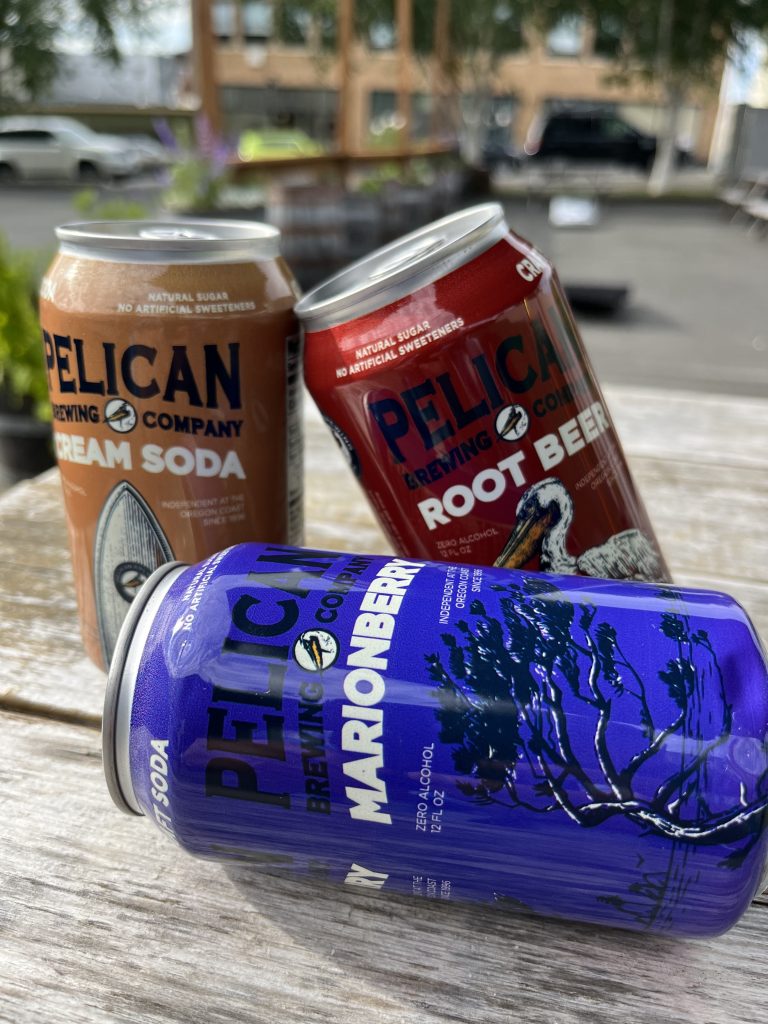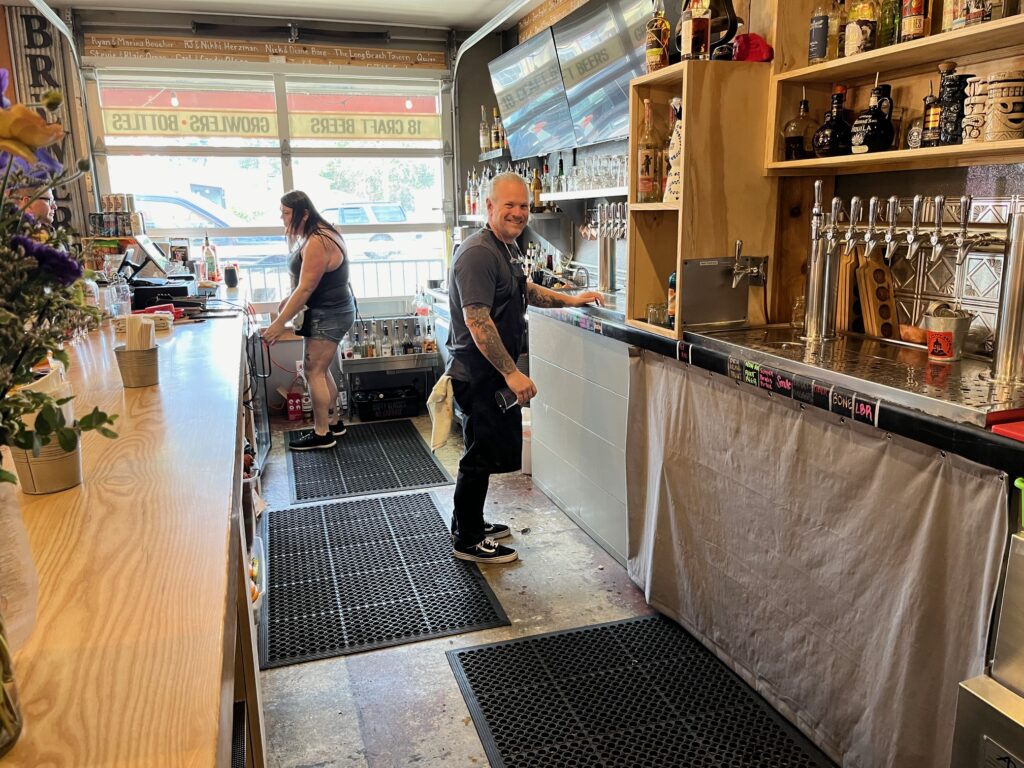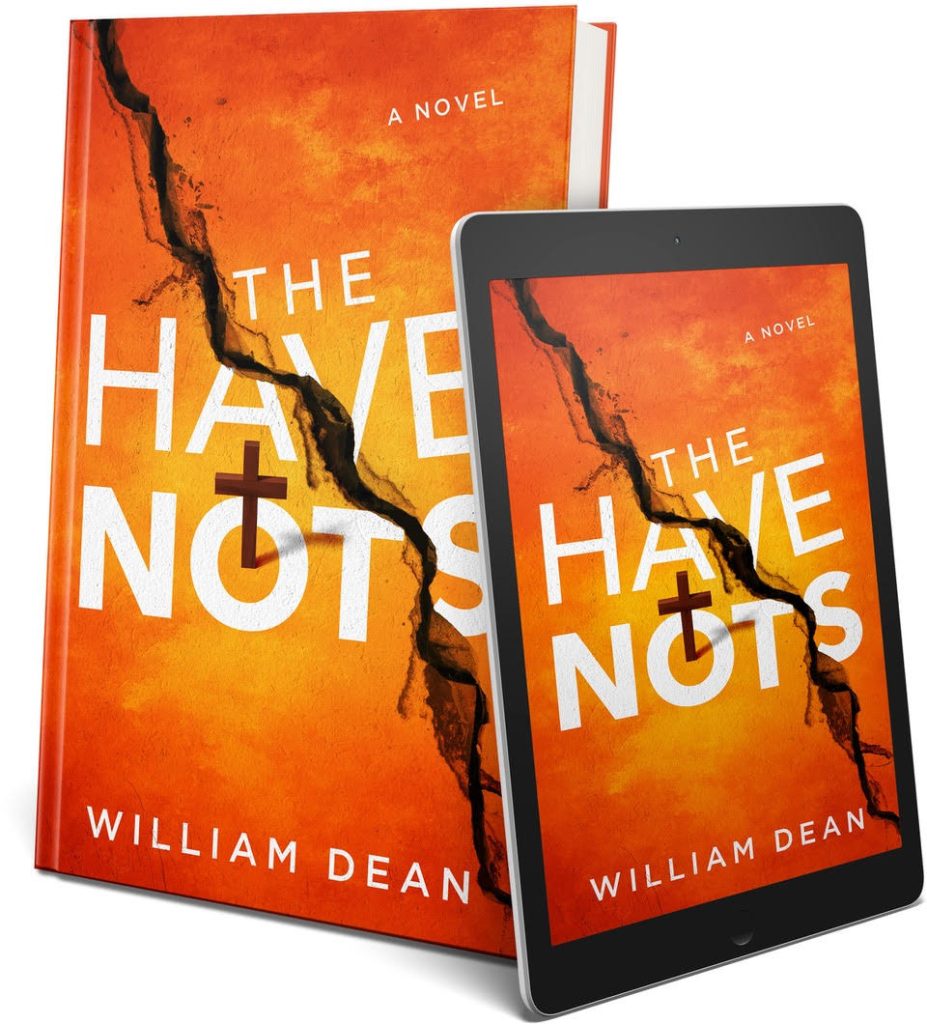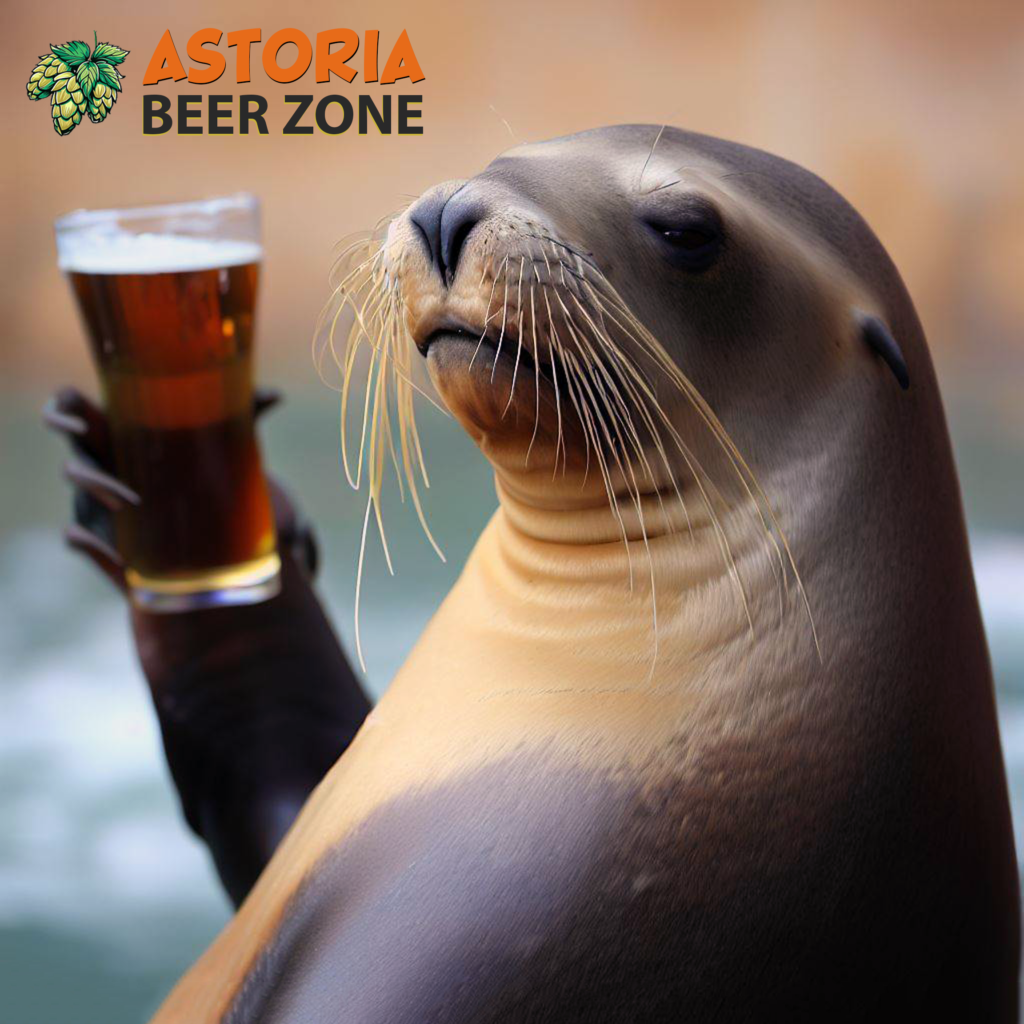BY WILLIAM DEAN
Craft breweries compete fiercely for space in grocery stores and bottleshops, but when it comes to making beer, they love joining forces.
Collaboration beers are special, fleeting creations – sometimes powerful enough to expand the boundaries of brewing. They come in a wide variety of styles, from barrel-aged stouts to hoppy IPAs and crisp lagers, but they are almost always unique in some way.
That’s why beer fans flock to taprooms for the limited releases. The excitement is palpable.
Since 2013, Astoria’s Fort George Brewery has made the release of its 3-Way IPA a rite of spring that’s feverishly anticipated throughout the Pacific Northwest. Two other breweries are enlisted in the endeavor – with the only rule being that no repeat guest beer-makers are allowed.
Fort George does dozens of “collabs” every year with a wide range of breweries. But the arrival of the latest 3-Way and its variants is a big deal, trumpeted with plenty of hype and gift shop merchandise.
Some 3,200 barrels (enough to fill 793,600 pint glasses) were brewed this year.
“A LOT!” summed up marketing director Brian Bovenizer in an email.
That’s not the norm. Most collabs are low-key and made in relatively small batches. They pop up in brewpubs like splendid surprises.
The average joint venture isn’t approached as a money-maker, although that certainly can happen. It’s done primarily for innovation and camaraderie, brewers say. A boost in profile or profits is gravy.
“It’s just fun to do collabs,” says Dave Coyne, co-owner and head brewer at Obelisk Beer Co. in Astoria. “You need to make room for some fun, because the actual work of production brewing is not always enjoyable.”
In his 12-year career as a professional brewer, previously at Fort George, Coyne estimates he’s done more than 80 collabs. Some involved breweries on the opposite coast. A few were international.
In Coyne’s view, the partnerships help redefine traditional beer styles (or create new ones), fostering experimentation and expanding knowledge.
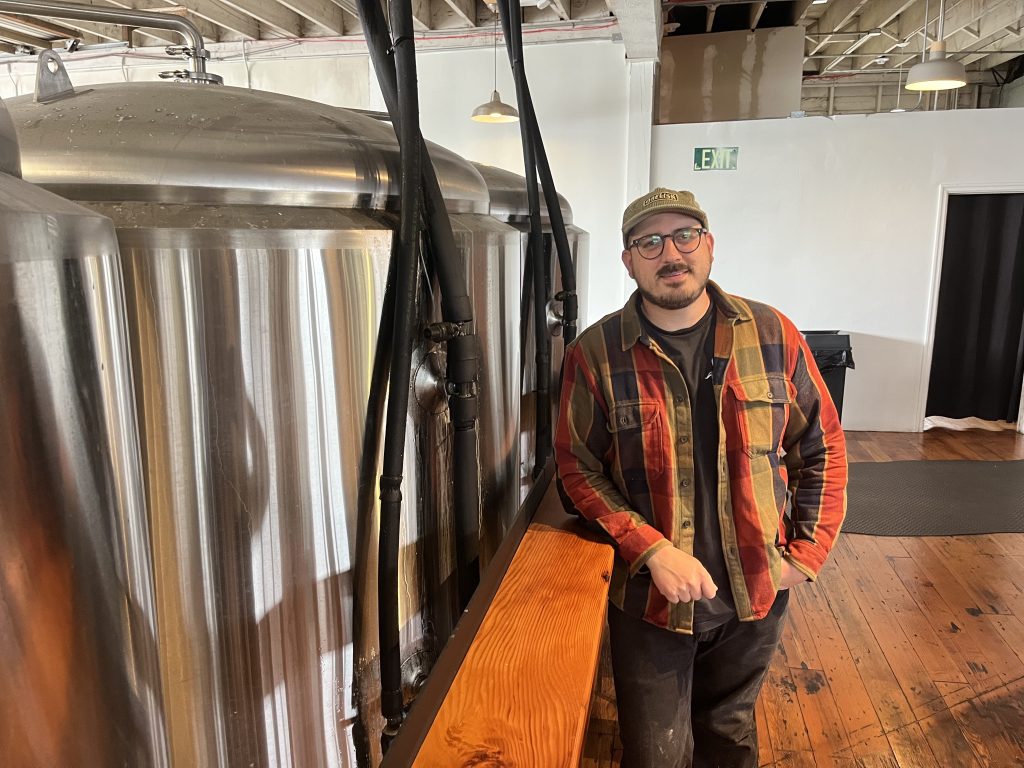
There’s a learning component to a collab that starts from the first in-person huddle or Zoom chat: Brewers with different backgrounds and expertise brainstorming a recipe. Those recipes often involve cutting-edge ingredients and brewing methods, which is part of the fun.
While American breweries have occasionally worked together for a long time, the alliances are increasing in number and importance as the industry experiences headwinds.
Craft brewing’s explosive growth has slowed significantly in recent years, a trend driven by younger adults seeking other drink options – or avoiding alcohol altogether. Overall beer sales are edging downward. Brewery closures are no longer a rarity.
Collabs, though, still create buzz. For a small brewery, that’s invaluable.
“It does help, especially for a brand just starting out,” says Lisa Allen, owner and head brewer at Heater Allen Brewing/Gold Dot Beer in McMinnville. “Doing a collab can help push your brand name out there so people are aware of it.”

Allen, who also serves as vice president of the Oregon Brewers Guild, believes collabs may be unique to craft brewing. What other artisanal industry so freely shares its trade secrets? Not wineries. Not distilleries.
While “hanging out with friends” from other breweries is always a pleasure, Allen considers a collab to be successful if she can learn a thing or two.
“For us, a brewery that is mainly focused on lagers, we can go someplace else and do a cool collab with maybe a hop extract – something that we’re not familiar with or that we use,” she says.
“We can kind of try out a new product, or a new hop, or a different malt.”
__
For Obelisk, partnerships with other breweries were the key to its early success.
The brewery opened in 2022 on Bond Street before its brewhouse was ready to use, but Coyne turned the delay into a blessing.
He did a long series of collabs, trucking kegs and cans to his taproom to keep the beer flowing. The host breweries put their share on tap, too, effectively promoting the fledgling Astoria brewery in a broad region.
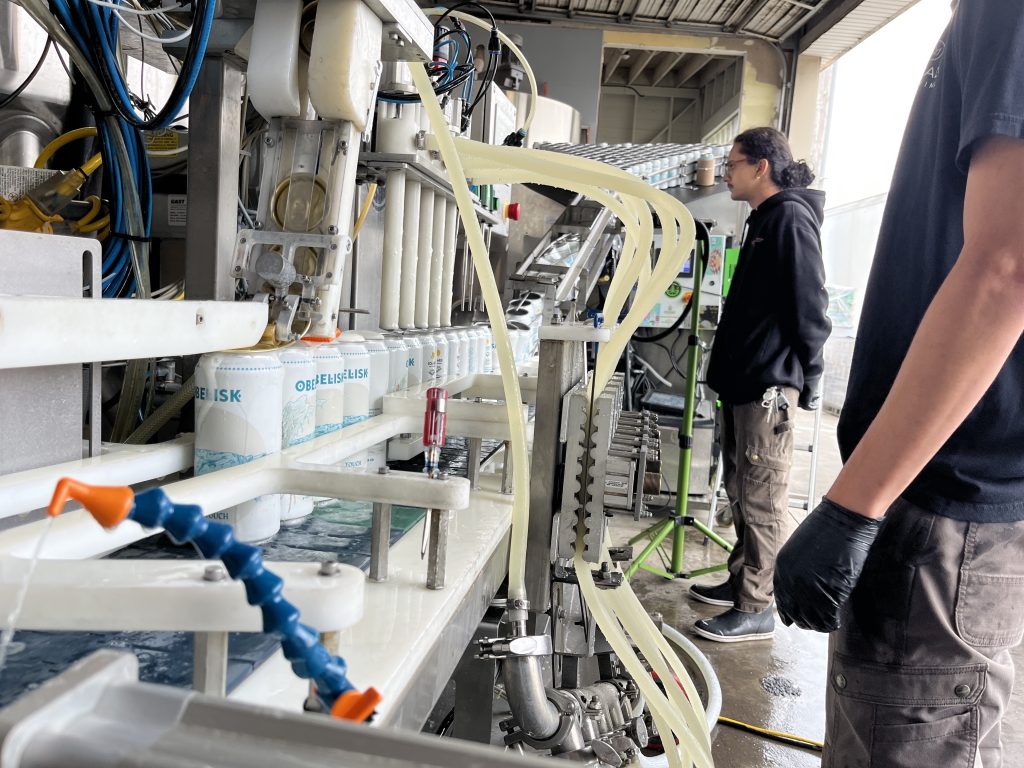
Once Obelisk could brew on its premises, Coyne continued to work on special beers with his friends at other breweries on a regular basis.
Why does he do it?
“The shared information is a real benefit,” Coyne says without hesitation. “Without having to go back to school or work at another brewery, you get to understand their brew processes – why they do things. … I’ll take whatever I learn and try to apply it to some of my beers – hopefully, make them better.”
The brewer proved his point last year by winning a gold medal for an IPA collab at the prestigious Great American Beer Festival.
“You’re doing something right,” he says of the honor.
__
How does a collab get started?
It’s often happenstance. Two brewers meet at a festival or awards program and hit it off.
The conversation may go something like this:
“Hey, we should brew together sometime.”
“That would be awesome. I love your beer.”
“Love yours, too. I’ll call you.”
“Cool!”
The first meeting (or call, depending on distance) is usually all business. The beer style and framework for the recipe is kicked around. Ideas for the name, too. The zanier, the better.
After that, the brewers get together a few times: on brew day; on canning day; and at the release event, if one is scheduled.
Obelisk’s recent collab with Burial Beer Co. based in Asheville, N.C. is typical of how such alliances come together.
In February, Burial brewers were in Astoria to attend the Festival of Dark Arts stout extravaganza. Mutual friends from Seattle introduced them to Coyne. They hit it off, hanging out the day of the festival, starting with breakfast and continuing well into the evening.
A friendship kindled, Coyne wasn’t too surprised when Burial called soon after. Would he be interested in doing a collab marking the Carolina brewery’s 12th anniversary?
Coyne said yes immediately. He didn’t need to mull it over – just the recipe and brewing methods.
That was hammered out in a series of phone calls and emails, along with the name: The Fatal Clutch of Distant Worlds. The brewers agreed on a West Coast IPA built on Pilsner malt and white wheat, then double dry-hopped. Finishing touches included a dose of Mosaic HyperBoost, a concentrated hop oil extract that Coyne hadn’t used before.
Burial, as host brewery, took on the responsibility of brewing, kegging, designing a label and canning.
For Obelisk, the experience was a valuable marketing opportunity, drawing the attention of beer drinkers in a whole new market.
It’s worth noting that not all collabs are between breweries.

Some involve alliances with companies outside brewing, like a hop farm, coffee roaster or chocolate maker. Others are intended to mark special anniversaries, support a charity, or recognize a person or organization.
But brewery-to-brewery collabs are special.
“People get excited,” Coyne says. “Oh, that’s Fort George and another two breweries. Well, I’ve got to try that. And it makes sense. I get enticed by it as well. It seems like it’s going to be a more impressive or bombastic beer as a collab.”
Do they sell well?
“Oh yeah,” he says. “There’s a lot of increased interest when you throw another name on the can.”
Allen agrees. She knows of breweries that did so well with collabs in terms of sales that they made the beer a year-rounder.
“That’s obviously a very good outcome,” she says.
Back to Fort George and that steady stream of collabs. What benefit does a well-established, mid-sized brewery derive from doing so many?
For owner Chris Nemlowill, the answer is simple: It’s about strengthening craft brewing through innovation.
“People want stuff that’s new,” he says. “It’s really important that we’re always brainstorming.”
Nemlowill praises the annual 3-Way collab as a “phenomenal success,” but says it’s not just about producing a singular IPA. The experimentation that’s involved helps keep the brewery’s other beer recipes from getting stale.
“If you think you can’t learn anything else, you’re done,” he says. “You might as well cash out. You can work with any brewery and learn something.”
__
WILLIAM DEAN is an author who also writes about craft beer and the people who make it. His blog is Astoria Beer Zone. “The Have-Nots,” his latest novel, is available now.

